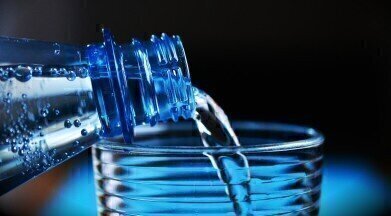Water/Wastewater
Is the US Facing a Water Crisis?
Feb 02 2020
According to the World Economic Forum’s Global Risks Report 2019, water scarcity is the fourth biggest threat facing mankind, behind only weapons of mass destruction, failure to appropriately deal with climate change and the prevalence of extreme weather events. Indeed, the issue is a more pressing one than many may believe, with some studies predicting that over two-thirds of the world population could be subject to water scarcity by as early as 2025.
While such issues are commonly associated with impoverished and sun-scorched regions of the planet such as Africa, Asia and the Middle East, there is a growing body of evidence that suggests the USA is also facing a water crisis of its own. Although not as grave as the situation in some parts of the world, contamination of existing supplies and a shortfall in future ones mean it might not be too long before some states find themselves unable to meet the H20 demands of their populations.
Something in the water
Given its prosperity and position at the forefront of global politics, it’s tempting to view the US as exempt from issues such as water contamination. However, confidence in drinking water supplies in the country were shaken in 2014, after the town of Flint in Michigan suffered a major crisis which exposed over 100,000 Americans to unsafe concentrations of lead in their drinking water. Stopgap solutions, such as the donation of high-performance water purifiers to afflicted residents, helped to circumvent the problem temporarily, but a permanent solution has yet to be found.
Indeed, recent studies suggest that millions of Americans in other parts of the country are also accessing drinking water systems which violate health safety standards. The effect that this is having on the health of the American people is still not fully known, but its impact on their outlook certainly is. A 2017 survey found that 63% of those questioned said they harboured serious concerns about the safety of their drinking water, while 57% thought that pollution of rivers, lakes and reservoirs was a major issue in the States. This, despite the fact that methods of analysing drinking water quality are more sophisticated than ever before.
In short supply
Perhaps even more worryingly, the supplies that some US states currently possess are projected to fall short of the demands of their populations within an alarmingly short window of time. New Mexico is believed to be most at risk, with its water shortage issues on a par with those found in places like the United Arab Emirates and Eritrea. Meanwhile, the major droughts which have afflicted California over the last decade mean it is not far behind.
In fact, researchers have estimated that almost half (96 of 204) water basins in the country could see demand outstrip supply as soon as 2071. That gives the authorities just over 50 years to address the problem, but given that the vast majority of water consumption is taken up by agriculture, and that the issues involved are exacerbated by climate change, it’s clear that a half-century might be an altogether too generous timescale for finding a solution. Make no mistake: the US is facing a water crisis and failure to act now could incur serious repercussions further down the road.
Events
Aug 24 2025 Stockholm, Sweden and online
Aug 27 2025 Busan, South Korea
Sep 02 2025 Mexico City, Mexico
Sep 02 2025 Mexico City, Mexico
Sep 09 2025 Moscow, Russia






.jpg)





